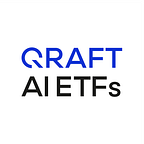Conducting Alpha Research
With Kirin API
The traditional approach to finding alpha has been labor-intensive and generally an expensive process. At Qraft Technologies, we focus on building data-driven investments with the power of artificial intelligence attempting to find low-cost and high-return portfolios. We have the arsenal to expedite the research of excess return strategies and automatically generate portfolios without the need to hire highly paid analysts.
So how do we make that happen? By first leveraging our in-house Kirin API.
Introducing Kirin API
Having the right information at the right time can mean the world of difference for investors. Kirin API, which was developed by Qraft’s data scientists, is a comprehensive data platform that integrates multiple vendors to provide both macroeconomic and company fundamentals with the correct point-in-time data. When conducting alpha research, investors need to be wary of two things: look-ahead bias and survivorship bias. These biases will likely occur if data is not recorded point-in-time and important information gets omitted, leading to inaccurate results and potentially causing a tremendous loss for investors.
- Look-Ahead Bias: Simply put, look-ahead bias occurs when you apply information that is not readily available. Analysts who commit this bias in their strategy will most likely deliver results that are drastically different from the actual trade. Hence a serious analyst should only utilize key information that is available at the time of the trade. One challenge with look-ahead bias, however, is that when backtesting, the bias cannot be detected by the data alone. Best way to avoid this is to set up systems and processes to protect against it.
- Survivorship Bias: Another flaw in investment analysis is survivorship bias. When analysts apply this bias, they intentionally leave out the funds that no longer exist in their calculation of performance results. This flaw may lead to overly optimistic results since only the failed and closed funds are ignored. In order to prevent survivorship bias, analysts and researchers will need to make sure that they do not omit funds that have shut down in their overall analysis.
At Qraft Technologies, we focus on building data-driven investments with the power of artificial intelligence attempting to find low-cost and high-return portfolios.
Point-In-Time Explained
There’s no question that point-in-time data is crucial when performing historical market analysis. But what exactly is point-in-time data? It’s essentially reflecting what information was known and when the information was shared. In backtesting, knowing these accurate details is paramount to forming an effective investment strategy.
However, if a future data seeps into the dataset, then any trading decisions made could be based off of inaccurate representation of historical performance. For example, if you are backtesting the trading signal for 10/31/20, then you should only include data from 10/31/20, 10/30/20, 10/29/20, etc.
Another way to look at this is to avoid using any future data caused by the difference between data date and file date. Data date is the date that marks the start and end of a quarter (i.e. end of Q4 2019 is 12/31/19). File date, on the other hand, is the actual date that important documents like earnings reports get released to the public. Often times, there is a wide gap between the two and unfortunately, major data vendors provide data without specifying file dates. This ultimately leads to quant models using information that isn’t currently available to backtest.
For instance, Q4 ended on 12/31/19 and let’s suppose that official documents didn’t get released until 01/15/2020. That means if you try to formulate a model before the release date, then your data will be flawed because you are using a future date. And the problem with future data is that it can cause biases which will lead to overfitting of the model.
Thus, in order to develop strategies for strong alpha potential, you need to ensure that every data point recorded is collected or updated at the appropriate time. This way, you don’t end up using future revisions when backtesting. This is especially important for macroeconomic and company fundamental datasets that may require revisions several times throughout the year.
Bringing Reliable Information
Many well-known data vendors overlook the significance of point-in-time data. That’s because the issue seems harmless at first. But we find that ignoring this issue can lead to damaging consequences for investors as it can jeopardize their investment processes with inaccurate information.
By integrating Kirin API, not only will important data (i.e., funds that have closed) not get omitted, but investors can backtest with exact point-in-time data with perfect adjustment of corporate actions like M&A, changes of equity structure, and delisting/listing events. With unrivaled and reliable data at your footstool, Kirin API can cleanse corrupt or inaccurate records from a database and provide a strong foundational start for alpha research.
Investing involves risk including possible loss of principal.
Artificial intelligence selection models are reliant upon data and information supplied by third parties that are utilized by such models. To the extend the models do not perform as designed or as intended, the strategy may not be successfully implemented. If the model or data are incorrect or incomplete, any decisions made in reliance thereon may lead to the inclusion or exclusion of securities that would have been excluded or included had the model or data been correct and complete. Service providers may experience disruptions that arise from human error, processing and communications error, counterparty or third-party errors, technology or systems failures, any of which may have an adverse impact.
— — — — — — — — — — — — —
Alpha is a measure of the active return on an investment, the performance of that investment compared with a suitable market index.
